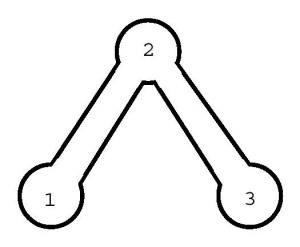THE ONLINE SEMINAR
How to Have the Living Water of Peace, hope,
and Purpose that Jesus Promised Us
Session Two: Our Soul
Part 1
When I was a child, my parents taught me a little prayer and had me recite it each night at bedtime. I’m sure many other children have prayed that same little prayer. It went like this:
“Now I lay me down to sleep. I pray the Lord my soul to keep. If I should
die before I wake, I pray the Lord my soul to take.”
I was four or five years of age at the time, but I still remember the hint of confusion and childhood fear I felt as I prayed those words. I never told my parents, but each time I prayed the prayer, I thought: Is there a chance I’ll die tonight? If I do, will the Lord take my soul? If He does, where will He take it? And what IS my “soul,” anyway?
I never got answers to those childhood questions. Worse, I’m sure millions of children over the centuries have recited that same prayer without knowing what it meant. So the purpose of Session Two is to reveal what the early Christians taught about our “souls” and, more importantly, to explain the role that our souls play in Spiritual growth.
Previously, in Session One, we said we were going to use a special diagram called The Three Circles diagram to teach the principles of Spiritual growth – and we said that the First Circle on the diagram represents the human soul. So here in Session Two, let’s look at that diagram for the first time.
Here’s The Three Circles diagram that we’re going to use to understand the amazing principles of Spiritual growth:
This diagram is extremely useful for understanding Spirituality and we’re going to use it in several ways during this seminar. But let’s start by focusing on Circle One (at the bottom left side of the diagram) and learn about our “soul.”
Many people have heard it said that humans are “made in the image of God.” But most people don’t know exactly what that means. I used to think it meant that God looked like me: He had two feet, two hands, two eyes, etc. But that’s not completely true. So to start understanding the peace, hope, and purpose that Spiritual growth gives us, the first thing we need to do is figure out what God looks like.
To find out what God looks like, let’s turn to one of the most ancient books of wisdom ever written. It was written in 1400 BC (over 3,400 years ago) by a man who had met God and had talked to Him. That man’s name was Moses and, based on his conversations with God, here’s how Moses said that God created people:
“God created humans in His own image. In the image of God, He created all
humans – both males and females.”[1. Adapted from Genesis, chapter 1, verse 27, written by Moses about 1400 BC.]
Now, the first thing this quote ought to do is end “the gender war.” Because men and women were both created in God’s image and were both created from the same material as God. That means men and women are Spiritually equal. And that’s a good thing. However, we still haven’t said what God is made of – and thus by extension, what we are made of. The answer is in the word “image” that Moses used. We need to find out what God’s “image” is.
The ancient book of wisdom that we’re talking about is part of today’s Old Testament portion of the Bible. It was written by Moses in the Hebrew language and, in the Hebrew language, the word image means a ghost or a shadow. In other words, it means something that’s not physical. Moses said that God isn’t physical. Instead, God is like a ghost: He’s invisible and transparent. But what does that say about people? Are people invisible and transparent, too?
To answer that, let’s leap forward many centuries in history. Years later, in the First Century AD, the early Christians also said that God isn’t physical. For example, here’s what the greatest teacher who ever lived said in the First Century about God (and about us):
“Genuine worshipers will worship the Father in Spirit and in truth, because
the Father is looking for that kind of worship. God is a Spirit – and His
worshipers must worship Him in Spirit and in truth.”[2. Adapted from Jesus Christ’s words in John, chapter 4, verses 23 and 24.]
So, God is a Spirit and must be worshiped in the Spirit. But let’s also pause to understand what that means. In the First Century, the early Christians wrote in an ancient form of Greek that was the international language of their day. And the Greek word for “spirit” is pneuma (pronounced “new’-muh”). It refers to something that’s invisible or transparent. Thus, pneuma can be translated as wind, breath, soul, or spirit, depending on the intent of sentence in which it’s used. (Notice that wind, breath, soul, and spirit are all invisible and transparent.)
Now, since the early Christians used the word pneuma to refer to God, they were agreeing with Moses that God is transparent like the wind. They were agreeing that God is an invisible Spirit. And if God is an invisible Spirit – and we’re created in His image – does that mean that we are invisible spirits, too? No. But it does mean that we have invisible spirits within us. And it’s important for us to talk about those inner spirits because they’re the key to Spiritual Growth, and thus to the peace, hope, and purpose that Spiritual growth gives us. In Part 2, we’re going to discuss our inner spirits in detail. Let’s turn to Part 2 now.
All Domestic and International Rights Reserved.

